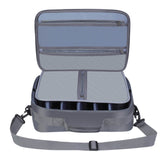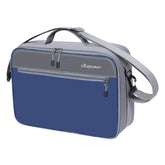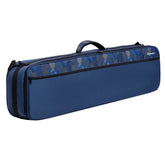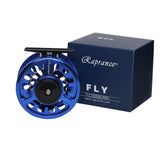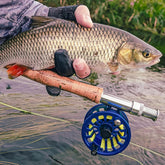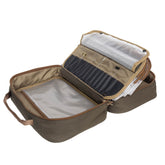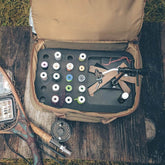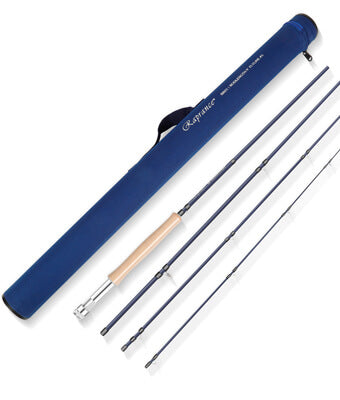Fly Line: Choosing the Right Line for Successful Fly Fishing
Choosing the right fly line is crucial for effective fly fishing. Whether you're using a level line, an intermediate fly line, or a specialized spey switch line, each type is designed to meet specific conditions and target species. Understanding the differences between these lines enables me to enhance my casting techniques and improve my chances of success on the water.

Level lines offer a straightforward option for beginners, while taper designs provide advanced anglers more control and accuracy. When it comes to fishing in varied depths, intermediate lines come into play, allowing me to present my flies at the right level. Meanwhile, traditional and spey switch lines cater to different casting styles, making it essential to match the line with the technique I plan to employ.
I’ve learned that the right fly line can significantly impact my experience and success rates. By exploring the features of each type, I can confidently select the line that best suits my fishing environment and objectives.
Fly Line Basics
Understanding the different types and attributes of fly lines is essential for effective fly fishing. The right choice influences casting performance, presentation, and ultimately, success in catching fish.
Fly Line Types and Their Uses
Fly lines are categorized primarily by their taper styles and specific applications. The two main types are floating and sinking lines.
- Floating Lines: Ideal for surface insects or dry flies. They allow for easy mending and visibility.
- Sinking Lines: Best for retrieving subsurface patterns. These incorporate varying sink rates, catering to different depths.
In addition, I utilize weight-forward lines, which have a thicker front section to aid in casting distance and accuracy.
Level lines are uniform in diameter and useful for short casts and specific techniques, while specialized lines like traditional spey or switch lines excel in river fishing, enhancing my line control during casts.
Material and Construction of Fly Lines
Modern fly lines are typically made from synthetic materials like PVC or polyurethane, ensuring durability and flexibility. These materials resist wear from harsh conditions and maintain performance over time.
Some classic options include silk lines, which provide a delicate feel and superior presentation, although they require more maintenance.
Most lines feature a core and coating structure. They often have different coatings to suit varying water conditions and uses.
The taper design significantly affects how a line behaves in the water and during the cast. I prefer taper configurations that suit my fishing style, such as a gradual taper for delicate presentations.
Selecting the Right Fly Line
Choosing the right fly line involves considering several factors, including rod action, fish species, and environment.
I examine my fly rod’s weight designation, as this guides me in selecting a line with a matching weight. For instance, a 5-weight rod should pair with a 5-weight line for optimal performance.
I also consider the water conditions. In faster moving rivers, I might opt for a sinking line to get my fly down quickly.
Lastly, evaluating the fly patterns I plan to use is crucial. Heavy streamers require different line specifications than dry flies. I base my selection on these elements to enhance my fishing experience effectively.
Tapers and Line Design
In fly fishing, the design of the line taper is crucial for casting efficiency and presentation. Different taper designs serve specific purposes, from casting distance to handling various types of flies.
Understanding Taper Designs
Taper refers to how the thickness of the line changes from the tip to the body. Various designs affect how the line casts and performs in the water.
-
Level Line Taper: This type maintains a consistent diameter, ideal for casting delicate presentations with dry flies or nymphs. It allows for smooth mends and control.
-
Weight-Forward Taper: This design features a thicker front section, transitioning to a thinner running line. It's effective for distance casting, allowing quick load and smoother turnover.
-
Intermediate Heads: These lines can adapt between water types while maintaining a steady sink rate. They're valuable for presentations with emergers or nymphs.
Specialized Fly Line Tapers
Specialized tapers cater to specific fishing techniques. Each type enhances line performance according to the fishing situation.
-
Spey Lines: Designed for two-handed rods, these long lines aid in casting large flies over long distances.
-
Switch Lines: They offer versatility for both single and double-handed casting, accommodating a range of techniques.
-
Shooting Lines: Often thin and slick, they enable greater distance by reducing friction when casting. They pair well with heavier heads.
Ultimately, selecting the right line taper aligns with my needs as an angler. It ensures optimal delivery when casting diverse flies across various fishing environments.
Fly Line Manufacturers and Brands
The fly line market features several notable manufacturers, each offering a range of products tailored for different fishing styles. I find that understanding the brands and their specific offerings helps in making informed decisions.
Popular Brands and Their Offerings
RIO is known for its innovative designs, including a variety of lines like level and tapered options. Their fly lines are often praised for their efficient casting performance and durability.
Airflo specializes in thermoplastic polyurethane lines, which provide excellent shooting capabilities. They offer a selection of intermediate fly lines and traditional spey lines.
Cortland has a long history in fly line production, known for their premium options such as the 444 series. They cater to a wide range of skill levels and fishing conditions.
Sage focuses on high-performance lines designed for advanced anglers, offering precision and sensitivity in their products.
Scientific Anglers provides a comprehensive range, including specialty lines for niche applications. Their leaders in innovation and technology stand out.
Orvis balances quality and affordability, making them a popular choice among beginners. Their user-friendly designs help improve casting techniques.
Wulff emphasizes ease of casting and line handling, with options for both fresh and saltwater applications.
Comparison of Fly Line Features
When comparing fly line features, I pay close attention to taper styles and materials.
-
Taper Styles:
- Level lines provide consistent diameter throughout, ideal for specific casting needs.
- Tapered lines assist with delicate presentations and accurate distances.
- Spey lines feature longer front tapers for better control in larger waters.
-
Materials:
- PVC lines are common, but more advanced thermoplastic lines offer superior performance.
- Coated lines repel water, improving sinking capabilities.
-
Specialty Options:
- Intermediate lines are designed to sink slowly, suited for subsurface fishing.
- Switch lines cater to versatility in multiple techniques, ideal for hybrid anglers.
Each manufacturer brings unique innovations to the table, making it essential to evaluate them based on personal fishing style and conditions.
Advanced Fly Line Techniques
In advanced fly fishing, mastering specialized lines like Spey and Switch lines can significantly enhance casting and fishing effectiveness. I will cover essential techniques and tactical approaches to maximize your success on the water.
Spey and Switch Line Fundamentals
Spey and Switch lines are designed for versatile casting, especially in challenging conditions. Spey casting allows me to cast longer distances without needing a backcast, which is beneficial in tight spaces. It employs a unique technique using the full arc of the rod to propel the line efficiently.
Switch rods accommodate both single-hand and two-hand casting styles. I often use a 5 to 8 weight line for switch rods, allowing for flexibility based on water type and target species. Key to success with this setup is knowing how to adjust my leader and tippet length according to fly size and water depth, which can influence my presentation drastically.
Specialized Techniques and Tactical Approaches
To optimize my fly fishing, employing specialized techniques is essential. One approach involves using heavier traditional Spey lines with larger flies for deep-water fishing. I often tie flies with materials such as fur and braids to improve both visibility and movement in the water.
Another technique is the “double-haul” cast, which I find effective for generating more speed and distance. Adjusting my leader and tippet setup enhances my fly’s drift, allowing me to target specific fish with precision. Understanding current and structure is critical, as it informs where to cast and how to retrieve, giving me a tactical edge on the water.

